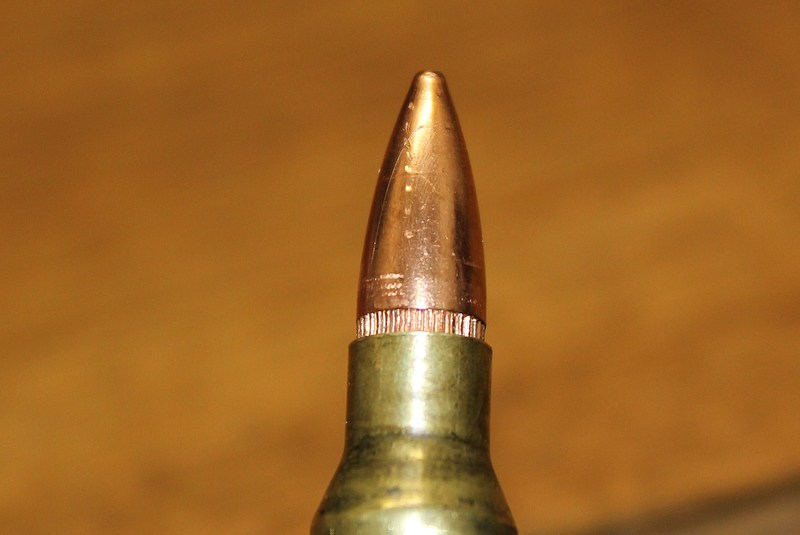packrat1969
Inactive
Greetings,
I've been reloading 9mm/.45ACP for some time now and have just entered the realm of bottleneck cartridges with my first 5.56 AR. I think I have a handle on the brass prepping situation, but I just now setting up my press for a 55gn FMJBT projectile. My reloading manuals and the internet have been great for cartridge dimensional info, as well as load data, but I haven't been able to find any statistics on COAL/OAL spread across X number of press cycles. I have a Dillon 550B with a set of Lee .223 Pacesetter dies and a Lee universal decapper die.
With the bullet-seating die firmly locked down as per Lee's instructions (screw in to touch shell-holder plus 1/4 turn), across 6 cartridges I'm getting a longest-to-shortest difference of .009 in. Is this reasonable? Even if I'm consistent on how I'm cycling the press, there seems to be more discrepancy per round than I would expect. One round will be right on, the next will be a little long, the next will be a little short, the next right on. Of course all these measurements are in the hundredths and thousandths of an inch. Even when I measure factory ammo, I'm finding some discrepancies.
What are the rest of you finding with your set-ups?
packrat
I've been reloading 9mm/.45ACP for some time now and have just entered the realm of bottleneck cartridges with my first 5.56 AR. I think I have a handle on the brass prepping situation, but I just now setting up my press for a 55gn FMJBT projectile. My reloading manuals and the internet have been great for cartridge dimensional info, as well as load data, but I haven't been able to find any statistics on COAL/OAL spread across X number of press cycles. I have a Dillon 550B with a set of Lee .223 Pacesetter dies and a Lee universal decapper die.
With the bullet-seating die firmly locked down as per Lee's instructions (screw in to touch shell-holder plus 1/4 turn), across 6 cartridges I'm getting a longest-to-shortest difference of .009 in. Is this reasonable? Even if I'm consistent on how I'm cycling the press, there seems to be more discrepancy per round than I would expect. One round will be right on, the next will be a little long, the next will be a little short, the next right on. Of course all these measurements are in the hundredths and thousandths of an inch. Even when I measure factory ammo, I'm finding some discrepancies.
What are the rest of you finding with your set-ups?
packrat

